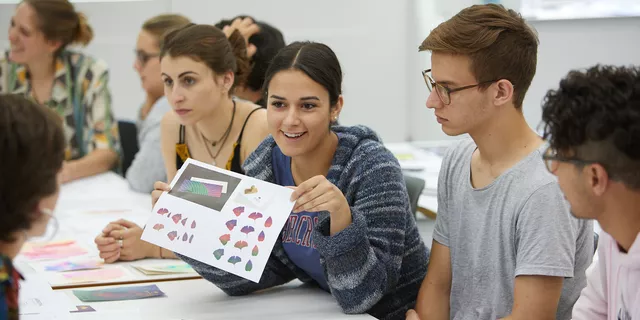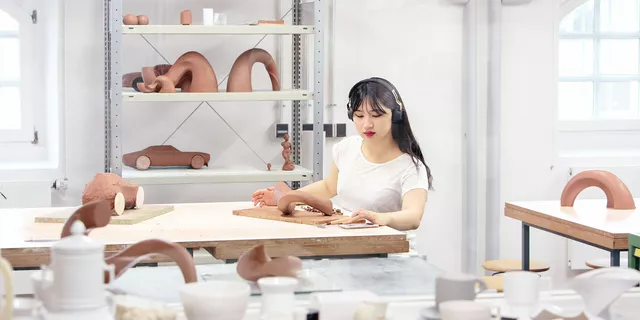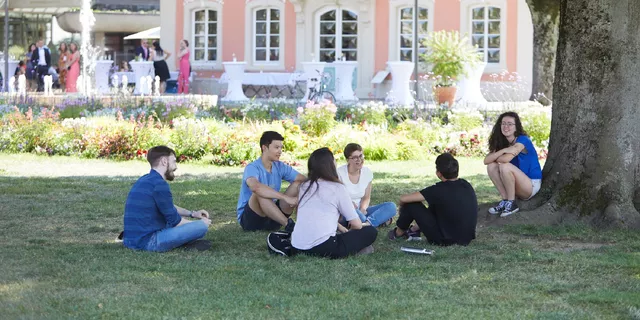Welcome at the HfG in Schwäbisch Gmünd!

Degree Seeking Students
If you want to apply to the Hochschule für Gestaltung as international full-time student, there are a couple of things you need to take notice of.
If you obtained your university entry qualification in a country other than Germany, you need to have this qualification recognized. All international applicants have to have their Higher Education Entry Qualification recognized by the Center for International Students (“Studienkolleg”) in Konstanz. If your qualification is recognized, you will be given a certificate matching your original grade onto the German grading scale. You have to submit this document with your application, along with a copy of your original certificate. The validation of your certificate is free of charge.

Exchange Students
Every semester we welcome more than 20 exchange students from all over the world! If you are studying at one of our partner institutions, you can apply for an exchange period of one or two semesters at HfG Schwäbisch Gmünd. Students from our European and Israeli partner institutions usually participate in the Erasmus+ program. If your university does not (yet) have a contract with us, it might be possible to apply as a freemover. Please contact our International Office for further information then.
Study in Germany – Land of Ideas with useful insights and helpful information about your stay in Germany provided by German Academic Exchange Service an initiative of the Federal Ministry of Education and Research. More information here.
-
Application
First of all, the International Office at your home institution has to nominate you for one or two semesters of exchange studies. Nominees are asked to send the following documents to HfG’s International Office via E‑mail:
- Application form summer semester and application form winter semester (Please select one study program only. You will still be able to attend courses from other programs later.)
- Learning Agreement (only for Erasmus students).
- CV and covering letter
- Portfolio
- Passport photo
- Copy of passport or official ID.
Please make sure to send all files in pdf or jpg format. Furthermore, please note that your application should not exceed 3 MB.
The application deadlines are:
May 1st for the following winter semester
November 1st for the following summer semesterWe will let you know whether you have been selected for an exchange semester within four weeks. Our selection process is based on your portfolio and available places in our study programs. All exchange students are expected to be proficient in English.
HfG welcomes students with special needs.
-
Semester Dates and Welcome Week
The winter semester usually starts in the second week of October, the summer semester starts in the second week of March. As an exchange student you will participate in our compulsory Welcome Week one week prior to the official semester start.
During the Welcome Week you’ll meet the other exchange students, student buddies and our International Team. An intensive German course takes place and professors, tutors and fellow students will give you a detailed explanation of the eligible courses. The course selection will happen during the Welcome Week. Additionally, we offer a campus and city tour, a welcome dinner, a bar tour and we do organize an excursion to the nearby city of Stuttgart. We are looking forward to meeting you soon! -
What courses can I choose?
As an exchange student, you have the possibility to enroll in one of our degree programs:
- Communication Design B.A.
- Interaction Design B.A.
- Product Design B.A.
You are then allowed to mix courses taught in English from those three programs and our new B.A. program Digital Product Design and Development. For example, with a major in product design, you can also take classes from communication or interaction design as a minor if your home university agrees. Our professors will advise you about the most appropriate classes during the Welcome Week.
-
German language skills
You don’t have to be able to speak any German as we offer a wide range of courses in English on undergraduate level. Furthermore, all communication will be in English. During the semester we offer a free German course once a week.
If you are a graduate student, we, first of all, have to check if exchange is possible for you. Please contact the International Office for that. In order to study one semester in our Master’s program, you have to be fluent in German.

Studying and Living in Schwäbisch Gmünd
An exchange semester at the HfG opens new perspectives! You will be confronted with other design themes and different teaching and learning methods and you will experience values, viewpoints and the design methods of another culture. Schwäbisch Gmünd has a creative environment with design offices, start-ups, co-working labs, and sports facilities. The low mountain range landscape around the city offers many outdoor activities.
Students´ Reports
Who can give you more authentic insights into HfG’s academic life than former exchange students?
My semester at the HfG Schwäbisch Gmünd was very insightful and inspirational. I gained new perspectives on both design and on life living abroad, and am very thankful for all the people I met and the things I learned during this experience.
My stay at Schwäbisch Gmünd has been an adventure full of new experiences. Thanks to the great family that forms the HfG and the kindness and empathy they have towards all their international students, I have had the opportunity to actively be a part of this small community, meet wonderful people and participate in various projects that previously would have been unthinkable in my day to day. Are you looking for a place to try out new feelings, thoughts and ideas? Without a doubt, this is your place.
International Office
The International Office is located in the main building in room H1.01 – if you have any questions we are happy to assist you personally, or help you by email and phone: